Top Vegetables to Grow Vertically in Your Garden
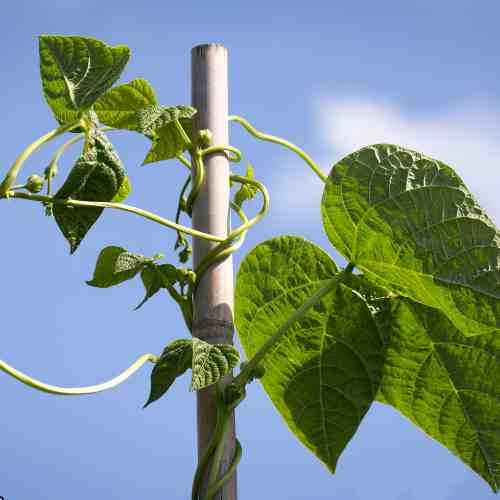
Vertical gardening has gained popularity as a space-saving solution for growing vegetables. By training plants to grow upward instead of spreading out, you can maximize your garden space, improve air circulation, and make harvesting easier.
Whether you’re working with a small garden, a patio, or even a balcony, vertical gardening offers an efficient way to grow more in less space. Below are some of the top vegetables to grow vertically, along with why each one is perfect for this growing method.
Get our Gardening Buddy and find veggies that fit your conditions best.
You Can Grow It!
Peas
Peas are a natural climber, making them one of the easiest vegetables to grow vertically. With a trellis or netting, peas will readily latch on and grow upward, saving ground space for other plants.
Growing peas vertically also improves airflow, reducing the risk of disease and making harvesting the pods more convenient. Plus, peas are a cool-season crop, so they’re great for extending your growing season.
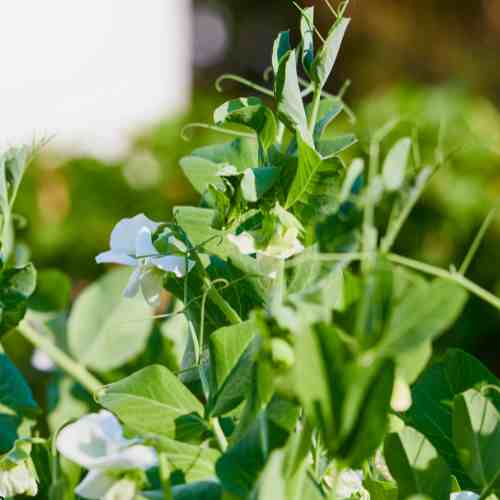
Tomato
Tomatoes, especially indeterminate varieties, thrive when grown vertically. Staking or using a tomato cage encourages upward growth, which helps the plant focus energy on producing larger, healthier fruit.
Vertical growing also allows for better air circulation around the plant, reducing the risk of fungal diseases. Whether you’re growing on a balcony or in a garden, tomatoes are a must-have for vertical gardening.
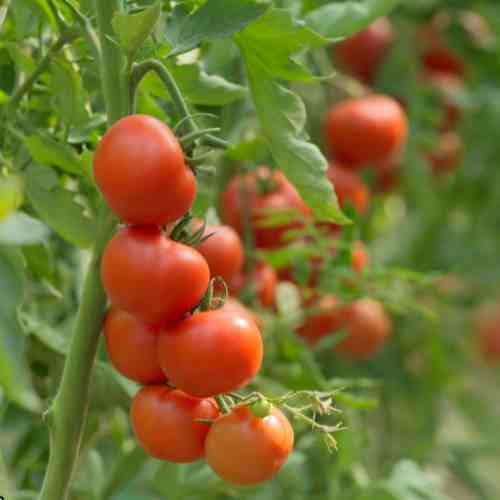
Peppers
Peppers are a versatile vegetable that benefits from vertical growing techniques.
By using stakes or cages, you can keep the pepper plants upright, preventing them from sprawling across the ground. This not only saves space but also keeps the peppers off the soil, reducing the risk of rot and pest issues.
Vertical support helps the plant focus on fruit production and can lead to a higher yield in small spaces.
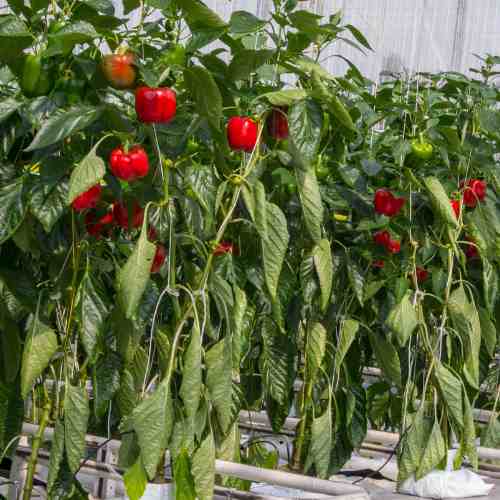
Cucumbers
Cucumbers are excellent for vertical gardening because they have long, trailing vines that naturally want to climb.
By growing cucumbers on a trellis or fence, you can prevent the vines from sprawling across the ground, which saves space and reduces the likelihood of disease.
Vertical growing also helps the cucumbers develop straighter fruit, making them easier to harvest and reducing the risk of soil rot.

Melons
While melons are typically large plants that take up a lot of ground space, they can be grown vertically with the help of a sturdy trellis.
By training melon vines to grow upward, you can save valuable garden space. Use slings or hammocks to support the weight of the fruit as it matures.
Vertical growing also improves air circulation around the plant, leading to healthier growth and better-tasting fruit.
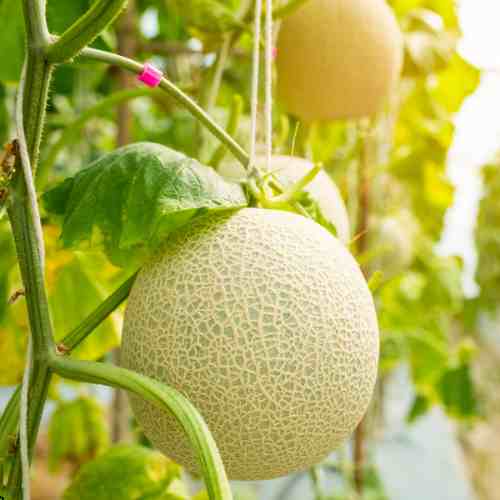
Pumpkins
Pumpkins might not be the first vegetable you think of for vertical gardening, but small to medium-sized varieties can be grown successfully on a sturdy trellis.
Like melons, pumpkins need additional support for their fruit, which can be provided by using slings made of cloth or netting. Growing pumpkins vertically helps save space in the garden and can protect the fruit from pests and soil-related diseases.
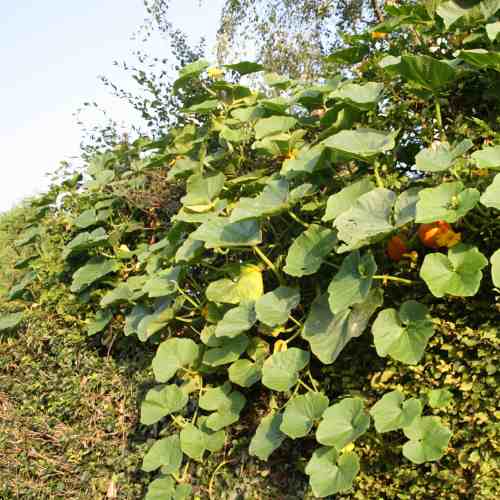
Eggplants
Eggplants grow well when supported vertically using stakes or cages. As eggplants produce heavy fruit, providing vertical support ensures that the plant remains upright and doesn’t collapse under its own weight.
Growing eggplants vertically also allows for better air circulation, which reduces the likelihood of diseases and helps the fruit develop evenly, resulting in healthier, more abundant harvests.
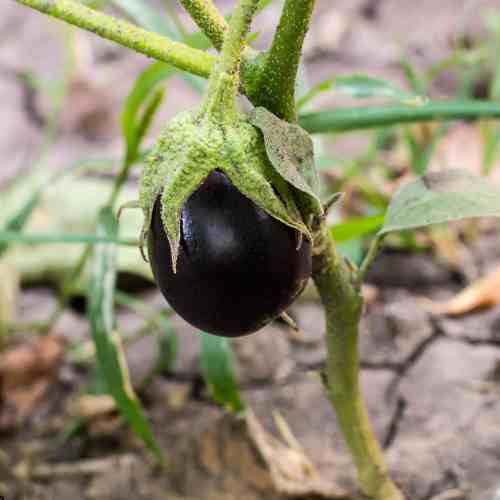
Corn
Corn is a tall-growing plant that naturally grows vertically, making it an ideal candidate for space-saving gardens.
While corn doesn’t require trellising like other vegetables, it benefits from being planted in blocks rather than rows to ensure proper pollination.
Growing corn in a vertical arrangement helps maximize space while still allowing you to grow this classic garden staple, even in smaller plots.
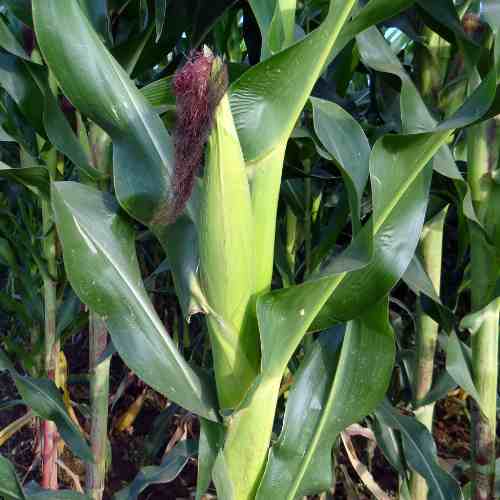
Find the Vegetables that are Best for you
Vertical gardening is a powerful technique that allows you to maximize space, increase yields, and reduce common garden problems like pests and disease. Vegetables like peas, tomatoes, peppers, cucumbers, melons, pumpkins, eggplants, and corn are particularly well-suited for vertical growing because they either naturally climb or benefit from support structures.
By integrating vertical gardening techniques, you can make the most out of even the smallest spaces while enjoying a productive, healthy vegetable garden.
Get our Gardening Buddy and find veggies that fit your conditions best.
You Can Grow It!
Partners and Sponsors
We are forever grateful to our partners and sponsors. Send an email to team @ strongecho.com and let’s see how we can grow each other’s impact!





